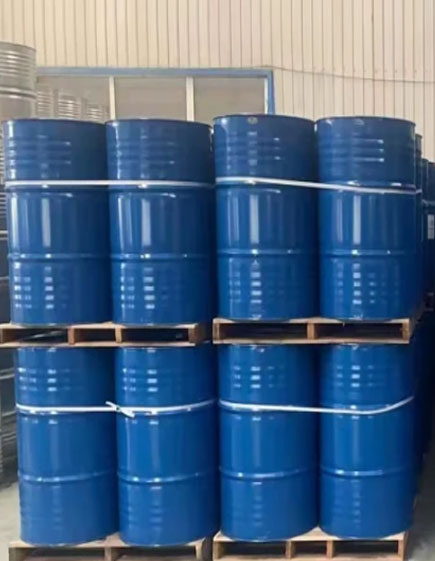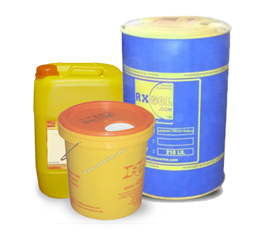Alphabets Search
Product Search
Categories
- --None--
- Agriculture-94
- Air Lines-36
- Asphalt Release / Products-90
- Automobiles-41
- Ballast Tank Chem-23
- Boiler Chemicals-42
- Carbon Coal Charcoal-26
- Clean Air deodorizer-24
- Construction Chem-67
- Coolant Glycol Antifreeze-27
- Cooling Water Chemical-43
- Corrosion Inhibitor-44
- Deck cabin galley Maintenance-25
- Degreaser-10
- Detergent & Soap-12
- Drain Clean Products-29
- Drilling Fluids & Mud Oil Field chemicals-81
- Electrical Cleaner-30
- Engine room Maintenance-16
- Evaporator Treat-51
- Floor Care ( Polish / Cleaner ) -13
- Foundry Ind Chemicals-54
- Fuel Treatment-70
- Gasses-66
- GREASES-92
- Hand Wash / Personal care-14
- Hold Solution-22
- House / HOTEL & CATERING-15
- Lab Chemical-60
- Lab Equipment-61
- Laundry Chemicals-26
- Leather Chem-96
- Medicine-95
- Metal Treatment-68
- Oil Spill Chem & Accessory -17
- Paint and Cleaning solvent-18
- Passivation-38
- Power Plant / Heavy Industries-37
- Pump & Accessory-21
- Radiator and AC coil cleaner-39
- Railway Maintenance-35
- Raw Chemicals-19
- RIGS Oil Field-34
- RO Chemicals-33
- Rubber Chemicals-93
- Rust Clean & Protect-28
- Safety Item-64
- Scale Remover-11
- Sewage Chemicals Treatment-40
- Stains Indicator Reagents-69
- Swimming Pool & Spa-31
- Tank Cleaner-20
- Test Kit For Water-62
- Textiles / Looms-91
- Wall Wash Test Kit-63
- Water Filter, Vessel, Softner, Accessory-32
- Water Treatment-40
- Wrench & Tools-65
NITRIC ACID 58-62% 45 KG
NITRIC ACID 58-62% 45 KG
Kg.(PWD)0
Product Description
Product Technical bulletin

| Product Name | : | RXSOL-19-1542-060 |
| Product Type | : | NITRIC ACID |
Company Details:
RX MARINE INTERNATIONAL
105, A wing , BSEL , TECH PARK.
VASHI ,NEW BOMBAY 400703 INDIA
| Phone | : | +91 22 65113333 / 5555 / 9999 / 27611360 |
| Fax | : | +91 22 2781 1318 :::AOH :0091 9821214367 |
| : | mail@rxmarine.com , sales@tankcleaner.net/ | |
| Website | : | www.rxmarine.com/ , www.tankcleaner.net/ |

| Chemica Name | CAS # | % by weight |
| NITRIC ACID | 7697-37-2 | 62.0- 68. |
| WATER | 7732-18-5 | 38.0- 32.0 |

| Eye |
Can cause permanent eye injury. Symptoms include stinging, tearing, redness, and swelling of eyes. Can injure the cornea and cause blindness. |
| Skin |
Can cause permanent skin damage. Symptoms may include redness, burning, and swelling of skin, burns, and other skin damage |
| Swallowing |
Swallowing this material may be harmful or fatal. Symptoms may include severe stomach and intestinal irritation (nausea, vomiting, diarrhea), abdominal pain, and vomiting of blood. Swallowing this material may cause burns and destroy tissue in the mouth, throat, and digestive tract. Low blood pressure and shock may occur as a result of severe tissue injury. |
| Inhalation |
It is possible to breathe this material under certain conditions of handling and use (for example, during heating, spraying, or stirring). Breathing this material may be harmful or fatal. Symptoms may include severe irritation and burns to the nose, throat, and respiratory tract. |
| Symptoms of Exposure | No Data |
| Target Organ Effects | No Data |
| Developmental Information | No Data |
| Cancer Information | No Data |
| Other Health Effects | No Data |
Primary Route(s) of Entry
Inhalation, Skin contact, Eye contact

| Eyes |
If material gets into the eyes, immediately flush eyes gently with water for at least 15 minutes while holding eyelids apart. If symptoms develop as a result of vapor exposure, immediately move individual away from exposure and into fresh air before flushing as recommended above. Seek immediate medical attention.. |
| Skin |
Immediately flush skin with water for at least 15 minutes while removing contaminated clothing and shoes. Seek immediate medical attention. Wash clothing before reuse and discard contaminated shoes. |
| Swallowing |
Seek immediate medical attention. Do not induce vomiting. Vomiting will cause further damage to the mouth and throat. If individual is conscious and alert, immediately rinse mouth with water and give milk or water to drink. If possible, do not leave individual unattended |
| Inhalation |
If symptoms develop, immediately move individual away from exposure and into fresh air. Seek immediate medical attention; keep person warm and quiet. If person is not breathing, begin artificial respiration. If breathing is difficult, administer oxygen. |
| Note to Physicians |
Preexisting disorders of the following organs (or organ systems) may be aggravated by exposure to this material: skin, lung (for example, asthma-like conditions). |

| Flash Point | Not applicable |
| Explosive Limit | Not applicable |
| Autoignition Temperature | No data |
| Hazardous Products of Combustion | May form: acid vapors, nitrogen compounds. |
| Fire and Explosion Hazards | No data |
| Extinguishing Media | water fog. |
| Fire Fighting Instructions |
Wear a self-contained breathing apparatus with a full facepiece operated in the positive pressure demand mode with appropriate turn-out gear and chemical resistant personal protective equipment. Refer to the personal protective equipment section of this MSDS. |
| NFPA Rating | Health – 3, Flammability – 0, Reactivity – 0 |

| Small Spill |
Cover the contaminated surface with sodium bicarbonate or a soda ash/flaked lime mixture (50-50). Mix and add water if necessary to form a slurry. Scoop up slurry and wash site with soda ash solution.Proper mixing procedures are essential. Trained personnel should conduct this procedure.Untrained personnel should be removed from the spill area. |
| Large Spill |
Eliminate all ignition sources (flares, flames including pilot lights, electrical sparks). Persons not wearing protective equipment should be excluded from area of spill until clean-up has been completed. Stop spill at source. Prevent from entering drains, sewers, streams or other bodies of water. Prevent from spreading. If runoff occurs, notify authorities as required. Pump or vacuum transfer spilled product to clean containers for recovery. Absorb unrecoverable product. Transfer contaminated absorbent, soil and other materials to containers for disposal. |

| Handling | Containers of this material may be hazardous when emptied. Since emptied containers retain product residues (vapor, liquid, and/or solid), all hazard precautions given in the data sheet must be observed. Addition to water releases heat which can result in violent boiling and spattering. Always add slowly and in small amounts. Never use hot water. Never add water to acids. Always add acids to water. |

| Eye Protection |
Chemical splash goggles and face shield (8″ min.) in compliance with OSHA regulations are advised; however, OSHA regulations also permit other type safety glasses. (Consult your industrial hygienist.) |
| Skin Protection |
Wear resistant gloves such as: neoprene, polyvinyl chloride, To prevent skin contact, wear impervious clothing and boots.. |
| Respiratory Protections |
If workplace exposure limit(s) of product or any component is exceeded (see exposure guidelines), a NIOSH/MSHA approved air supplied respirator is advised in absence of proper environmental control. OSHA regulations also permit other NIOSH/MSHA respirators (negative pressure type) under specified conditions (see your industrial hygienist). Engineering or administrative controls should be implemented to reduce exposure. |
| Engineering Controls | Provide sufficient mechanical (general and/or local exhaust) ventilation to maintain exposure below TLV(s). |
| Exposure Guidelines Component |
NITRIC ACID (7697-37-2) OSHA VPEL 2.000 ppm – TWA OSHA VPEL 4.000 ppm – STEL ACGIH TLV 2.000 ppm – TWA ACGIH TLV 4.000 ppm – STEL WATER (7732-18-5) No exposure limits established |

| Boiling Point | (for product) 185.0 F (85.0 C) @ 760 mmHg |
| Vapor Pressure | (for product) 51.000 mmHg @ 77.00 F |
| Specific Vapor Density | 2.200 @ AIR=1 |
| Specific Gravity | 1.424 @ 77.00 F |
| Liquid Density |
11.850 lbs/gal @ 77.00 F 1.424 kg/l @ 25.00 C |
| Percent Volatiles | 100.0 % |
| Evaporation Rate | SLOWER THAN ETHYL ETHER |
| Appearance | No data |
| State | LIQUID |
| Physical Form | HOMOGENEOUS SOLUTION |
| Color | CLEAR,YEL-RED-BRN, ACRID ODOR |
| Odor | No data |
| pH | No data |

| Hazardous Polymerization | Product will not undergo hazardous polymerization. |
| Hazardous Decomposition | May form: acid vapors, nitrogen compounds. |
| Chemical Stability | Stable. |
| Incompatibility | Avoid contact with: organic materials, reducing agents, strong alkalies, Acid reacts with most metals to release hydrogen gas which can form explosive mixtures with air.. |

No Data

No Data

Waste Management Information
Collect and add slowly to large volume of agitated solution of
soda ash and slaked lime. Add neutralized solution to excess
running water in accordance with applicable regulations.

DOT Information – 49 CFR 172.101
DOT Description:
NITRIC ACID, RED FUMING – HAZARD ZONE B,8,UN2032,I
Container/Mode:
55 GAL DRUM/TRUCK PACKAGE
NOS Component:
None
RQ (Reportable Quantity) – 49 CFR 172.101
Product Quantity (lbs) Component
1064 NITRIC ACID 
US Federal Regulations
TSCA (Toxic Substances Control Act) Status
TSCA (UNITED STATES) The intentional ingredients of this
product are listed.
CERCLA RQ – 40 CFR 302.4(a)
Component RQ (lbs)
NITRIC ACID 1000
CERCLA RQ – 40 CFR 302.4(b)
Product label
Related Products
Product Inquiry
×
Request for Quote and Get Heavy Discount on Price

